What do stoats and a letter to the Editor of The Times have in common? Both are tricky to ‘catch’ as they are both suspicious of the anything too obvious – whether a trap or correspondence. The trick on the latter is to be pithy. Though this brevity to secure publication tends to bleed out nuance and context – which I flesh out in this blog.
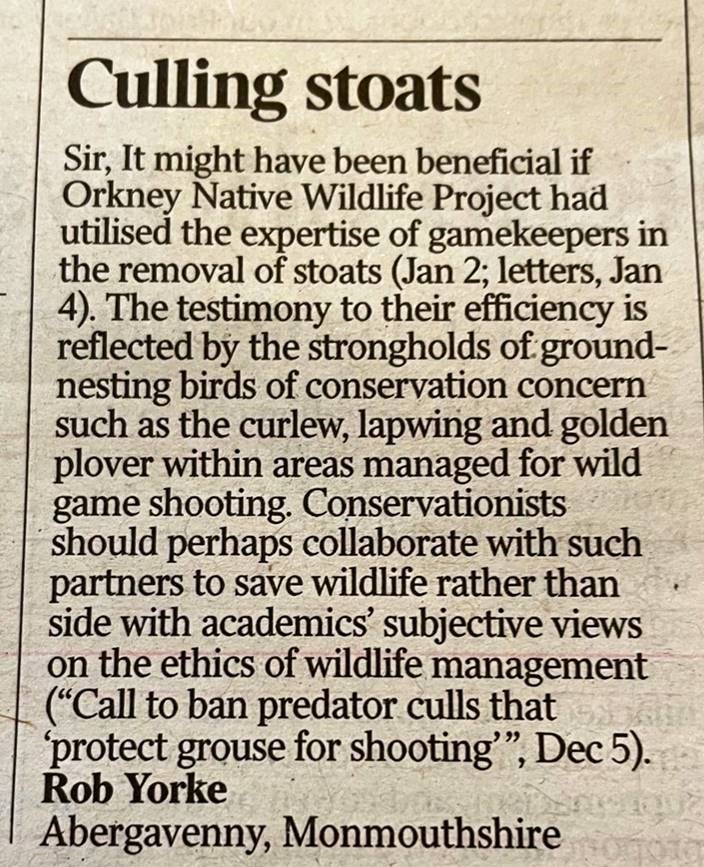
Orkney wildlife
This National Lottery and EU-funded project is a partnership between Nature Scot, the RSPB and Orkney Isles Council. The comprehensive website is very public and volunteer-facing but perhaps lacks deeper detail on the members of technical steering group and experts from New Zealand. This is key nub for me in demonstrating how diverse (value) groups, stakeholders, ‘interested parties’ work together.
For example this project-specific research (2022*) would have been useful to link to, as would this local radio piece 2019 (from 6.45min), this govt-led report (2015), and this unpublished report (2018) – all referenced in the project research above*.

This provides wider context to a project which is as much about social science, as it is about ecological science.
“a large number of landowners lawfully denying access to trapping, something that was not expected based on the extensive consultation on a land access agreement process performed during project development.”*
Using a Modeling Approach to Inform Progress Towards Stoat Eradication From the Orkney Islands

Partnership conservation
Some of the partners above were involved in an earlier long running partnership in Scotland. Scot Nature (previously SNH), RSPB plus GWCT, Natural England and the landowner were the Langholm Moor Demonstration Project. Which in turn engaged me to write the 7 year review (see link in this blog). It provided extraordinary insight on wider conservation and social issues operating within a partnership.
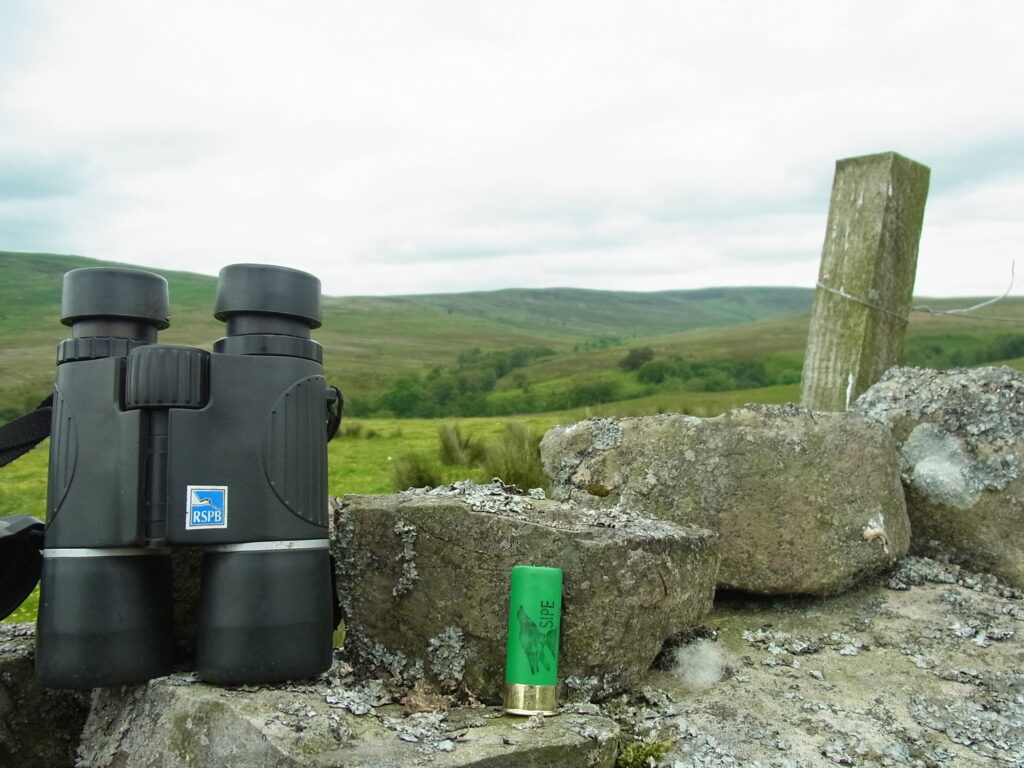
Pithy comms
“I didn’t have time to write a short letter, so I wrote a long one instead”
Mark Twain
It’s not easy getting a letter past a Times letters editor. They want it pithy, pertinent and sometimes frankly a bit peculiar (which could mean stimulating to provoke more letters?!) It also bleeds out nuance (no room) and context (often behind a paywall), so standalone letters can leave people baffled and frankly bemused as to you what you are trying to convey. Which may not necessarily be my view, but unaired views, as in a thoughtpiece.)
‘Transforming conservation…’
…is a great book and free-to-access resource. There’s a plethora of stuff from drawing a ‘mind map’ on snipe (dropdown to 4.7.4), theorising on evidence-based tree planting (page 362), modeling a rat removal scheme (page 222) or learning from failures around stakeholder agendas (page 343). There’s a good search function to find stuff- see this bit on trust and collaboration.
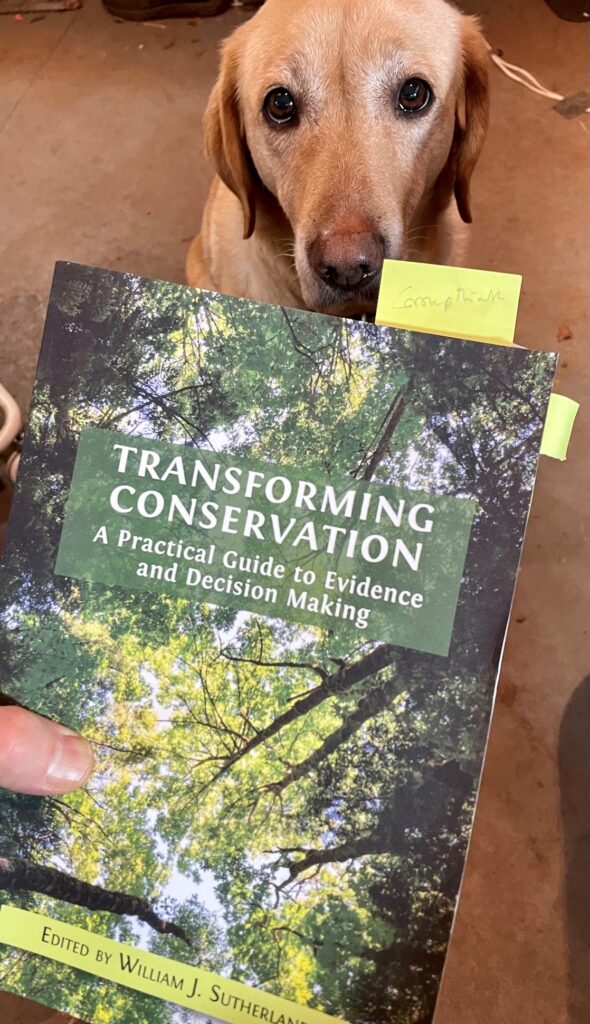
Game>wildlife keepers
The ONWP could have done with a search button! Gamekeepers are involved in the Orkney project. Their expertise supplied from within the technical group (hard to find a link to it). Experience from practical application of ‘predator control’ to conserve wild game birds: such as red grouse, grey partridges and pheasants (not released ones) by culling/managing/controlling/killing [select own word] other wildlife deemed a threat to them.
While the dis-benefits of this operation undertake legally are increasingly well scrutinised, the benefits are less so – as in this piece of unpublished research see under ‘hunting’ section “Report 40”.
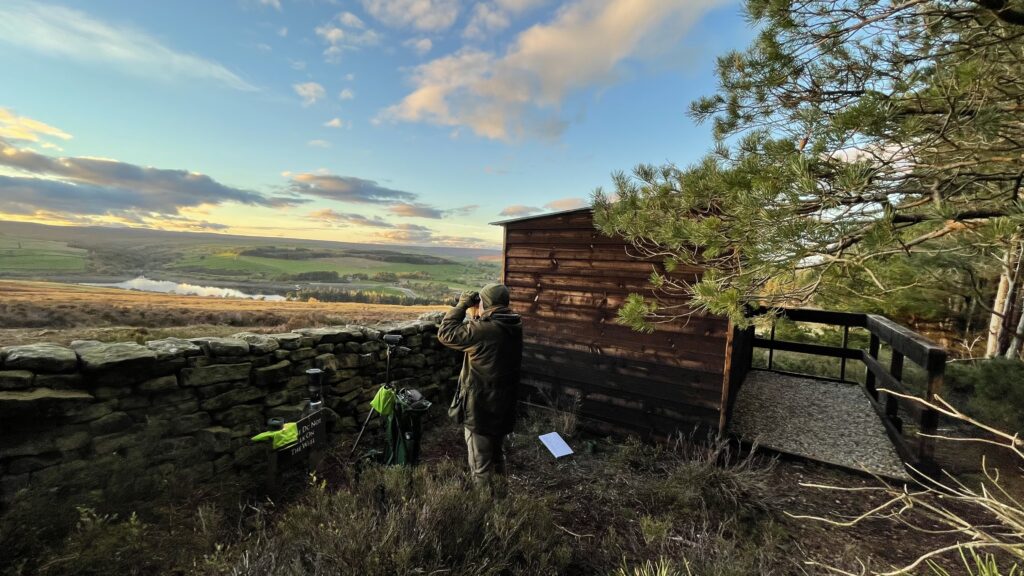
So perhaps gamekeepers need to change their name to stay ‘in the room’. This MFI heir now calls his keeper a ‘reserve manager’. The manager does most things he did before as a keeper. But not everything is the same as before; even if conservationists need to lethally manage wildlife to save other wildlife.
The p/v words matter
A pest controller for rats is fine. The use of the word ‘vermin‘ less so – even if the National Trust once billed sparrowhawks as such. Even Defra prefers to contribute to fund literature about ‘wildlife management’ rather than ‘predator control‘. The public licence to operate is tightening. Though perhaps unknowingly making it harder to save some species from extinction* and conserve others in the long term (curlew). Environmental NGOs – though perhaps not shooting organisations (too obvious) – could do more to explain the need to manage some wildlife to benefit other wildlife. Think mink or hen harrier (see ad below)

Funding flows only to certain projects – so bring in the ‘trusted intermediaries‘ sooner rather than later to engage diverse local communities. Inform citizens, honestly, of what lies ahead (see stone curlew and capercaillie projects). Repurpose, without airbrushing out, ‘The Modern Gamekeeper at Home as a Wildlife Manager’ to help deliver the objectives within the push to restore nature.
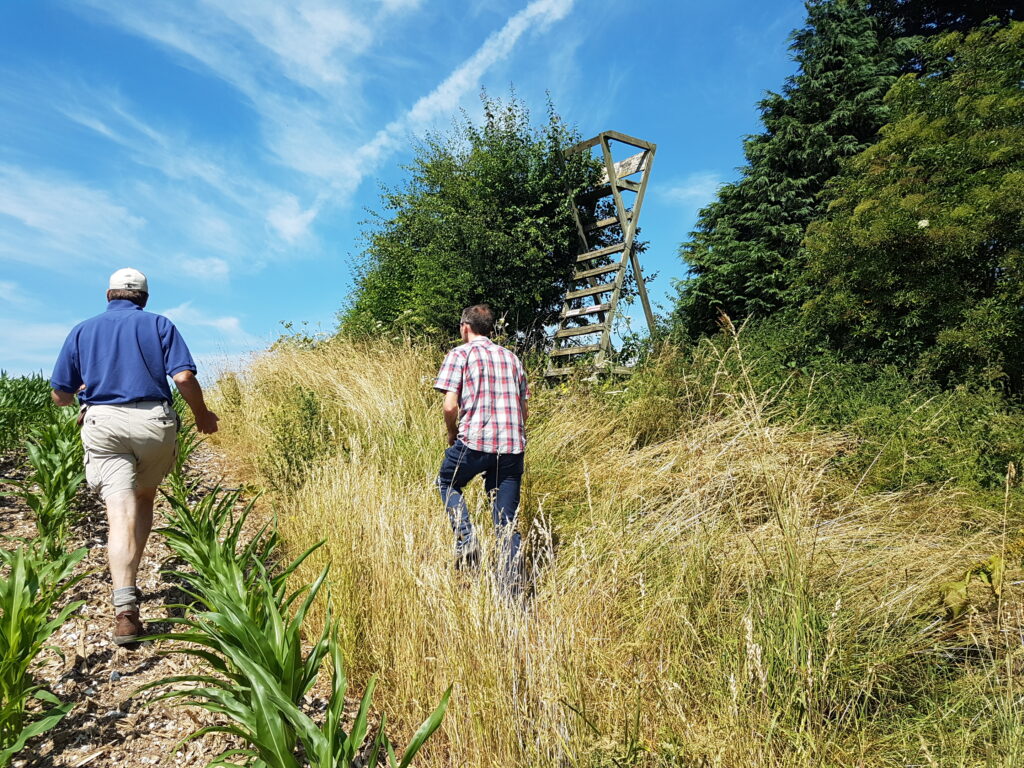
Ethical scrutiny
I can’t help lateral thinking when I notice an unconnected, yet totally connected item, in the news. A junior reporter at The Times did a piece (see link above) on a report by ethics academics (‘Killing to Kill’) commissioned by an animal welfare organisation on “predator control”. The problem is animal welfare, though a very valid topic in relation to the relevant body, is not about wildlife conservation or wildlife management science. ‘Compassionate Conservation‘ may be great to debate in a pub but do we have this luxury of time to if we want to restore wildlife by 2030?
Dear Sir
Should I have written my letter in the first place? (no one else bothers). Should I have posted it on social media? As my 15 year old daughter tells me, my role is “to make you think” – has it and did this blog help or not?
Do leave a comment below.

footnotes/context: BBC report on ONWP costs | access tensions over greylag geese* on Orkney | Some Facebook comments on the letter | Irish gun clubs save curlew (just one tool) | gamebird/predator research funder (ouch) | NRW Curlew Connections Partnership (focus on Important Curlew Areas) | add £4m funding for stoat removal
- and an earlier letter on mustelids in The Times (2017), and some of my 134 letters published in the same on environmental issues
note: this is an adaptive blog prone to updates (last updated 03/8/24)
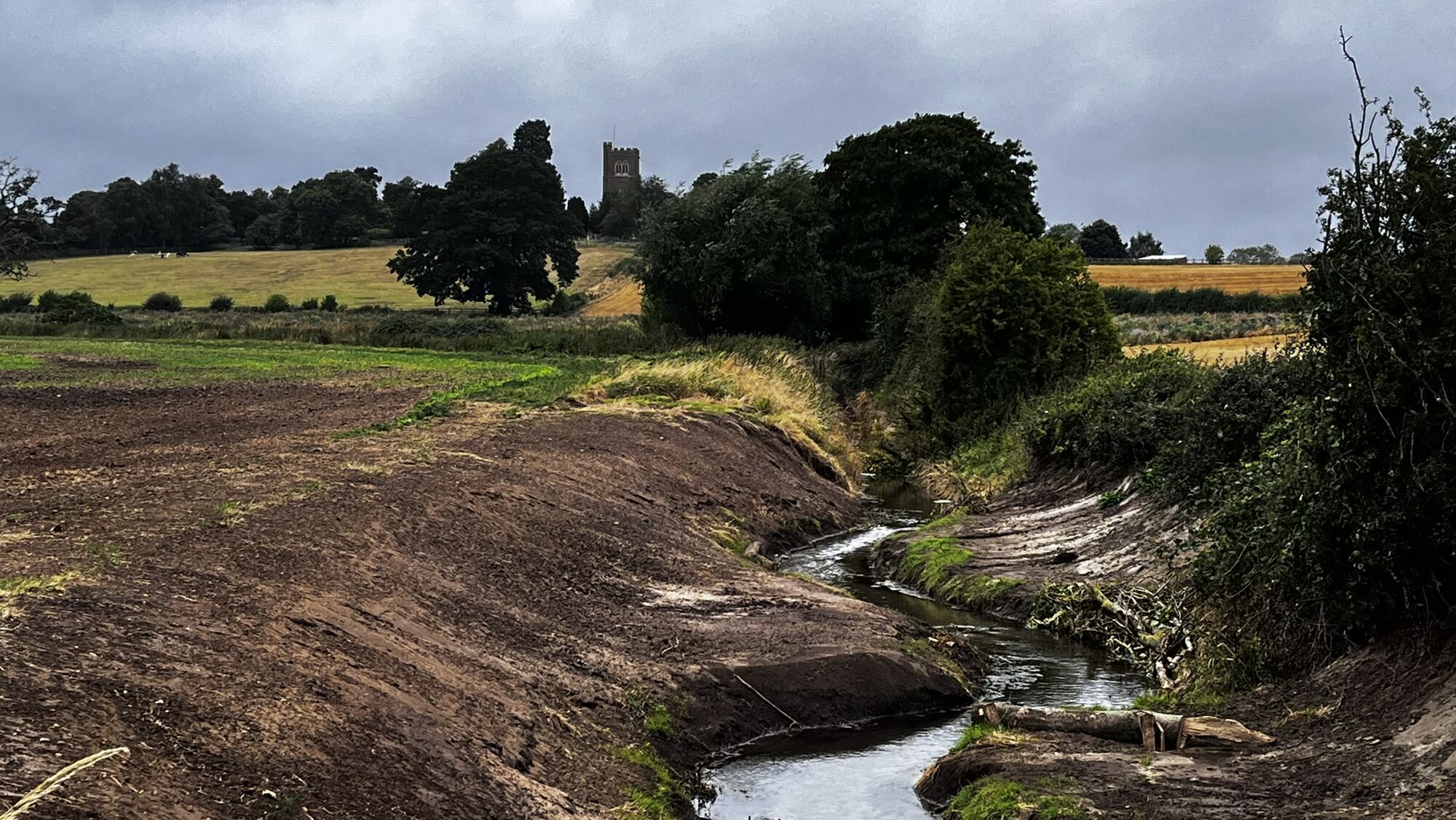
Well done! Succinct and well researched, looking from many sides and through several lenses is so important to understand ecology & management.
I particularly liked the reference to academics having subjective views. This seems very much the case for anything related to grouse/shooting. Very important to not shy away from speaking up and encouraging a more open mind, to listen to and learn from each other and not to demonise just because.
Academics are people too! We’re allowed to have subjective views you know. Opinions matter! But I do like to support my opinions with well researched and correctly cited sources – witness my own take down of the ‘rarer than rainforest claim’ that 75% of the world’s heather moorland [is in the UK].
That said, it’d be good if we could turn our attention to the release of 50+ million non-native game birds per annum, which alongside the artificially managed wild bird populations (grouse), all encourage higher mesopredator [foxes, badgers, mustelids, hedgehogs etc] populations. When added to habitat ‘loss’ from land take for agriculture and forestry, creates the need for high levels of predator control within an increasing vicious circle. If we are to eradicate invasive/non-native populations of mesopredators, should we do the same with non-native game bird pops elsewhere?
Controlling stoat numbers is a breeze using a screaming rabbit call and walking about 20 yards parallel to a stone wall. They pop out their heads for a view the “afflicted rabbit” and are easily shot. No damage to anything other than the stoat/weasels who are so enticed by that screaming.